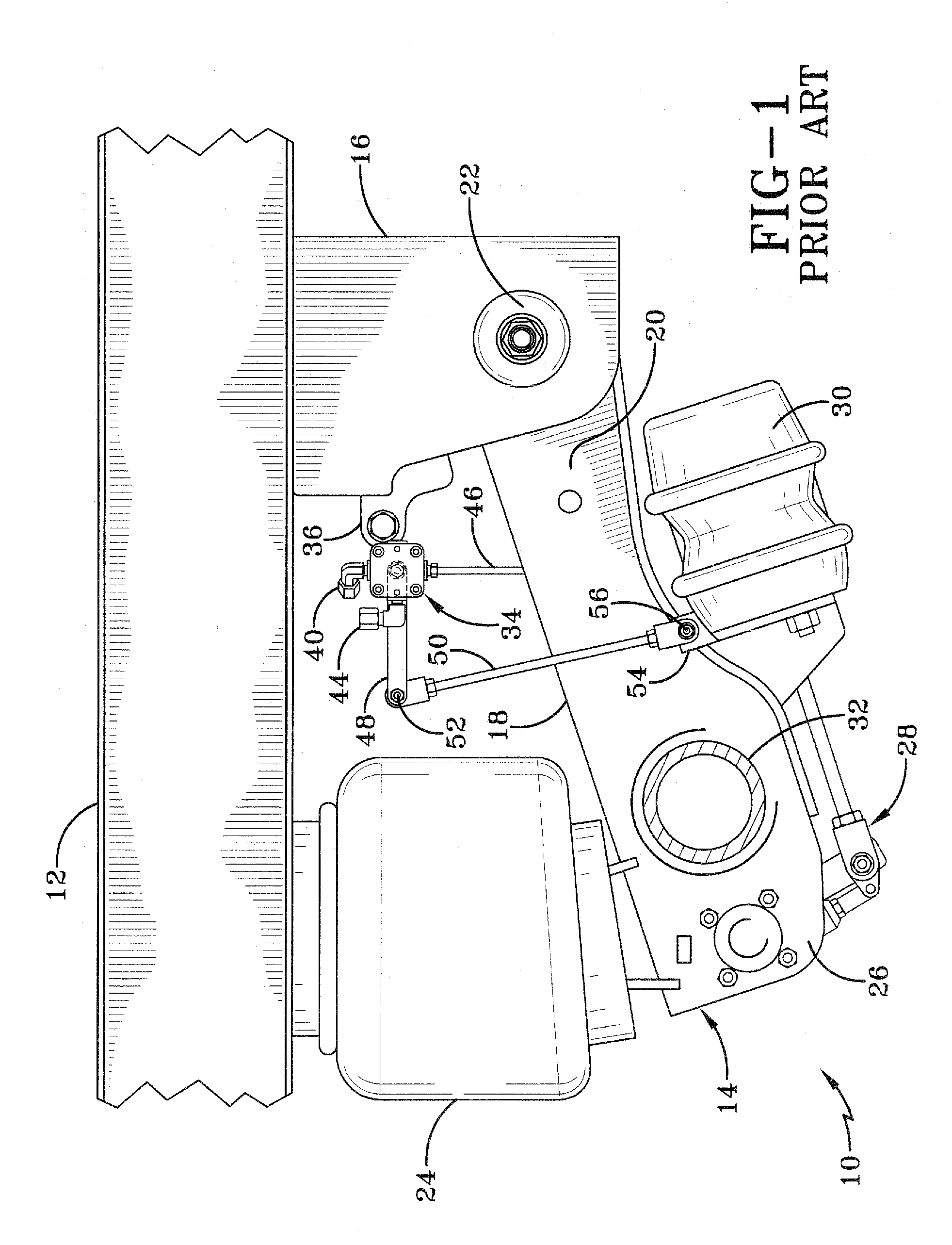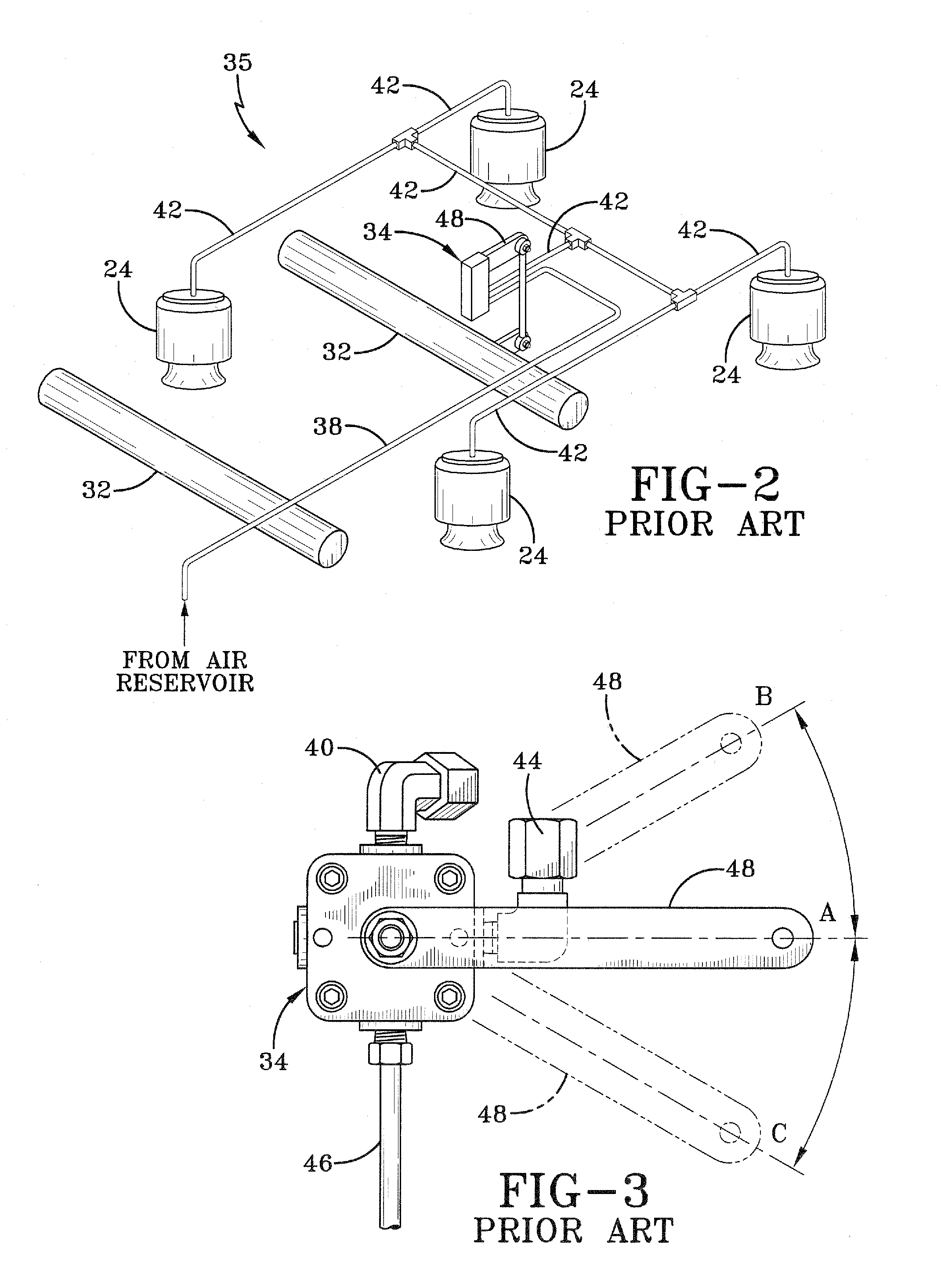Pneumatic proportioning system for vehicle air springs
a pneumatic proportioning and axle/suspension technology, which is applied in the direction of valve operating means/release devices, shock absorbers, transportation items, etc., can solve the problems of relative rough ride to cargo and/or passengers, and premature failure of front and rear axle/suspension systems and their associated components, such as the axl
- Summary
- Abstract
- Description
- Claims
- Application Information
AI Technical Summary
Benefits of technology
Problems solved by technology
Method used
Image
Examples
Embodiment Construction
[0041]So that the structure, operation, and advantages of the pneumatic proportioning system for air springs of an air-ride axle / suspension system of a heavy-duty vehicle of the present invention can be best understood, a typical prior art pneumatic control system will now be described in the environment in which it is utilized. It is important to note that prior art air-ride axle / suspension system 10, while shown as a beam-type trailing arm axle / suspension system, also includes other types of heavy-duty vehicle air-ride axle / suspension systems known to those skilled in the art, such as leading arm beam-type air-ride axle / suspension systems and air-ride axle / suspension systems other than beam-type. It is also important to note that vehicle frame 12 is generally representative of various types of frames commonly used for heavy-duty vehicles, including primary frames that do not support a subframe, primary frames and / or floor structures that do support a subframe, and subframes themse...
PUM
 Login to View More
Login to View More Abstract
Description
Claims
Application Information
 Login to View More
Login to View More - Generate Ideas
- Intellectual Property
- Life Sciences
- Materials
- Tech Scout
- Unparalleled Data Quality
- Higher Quality Content
- 60% Fewer Hallucinations
Browse by: Latest US Patents, China's latest patents, Technical Efficacy Thesaurus, Application Domain, Technology Topic, Popular Technical Reports.
© 2025 PatSnap. All rights reserved.Legal|Privacy policy|Modern Slavery Act Transparency Statement|Sitemap|About US| Contact US: help@patsnap.com



